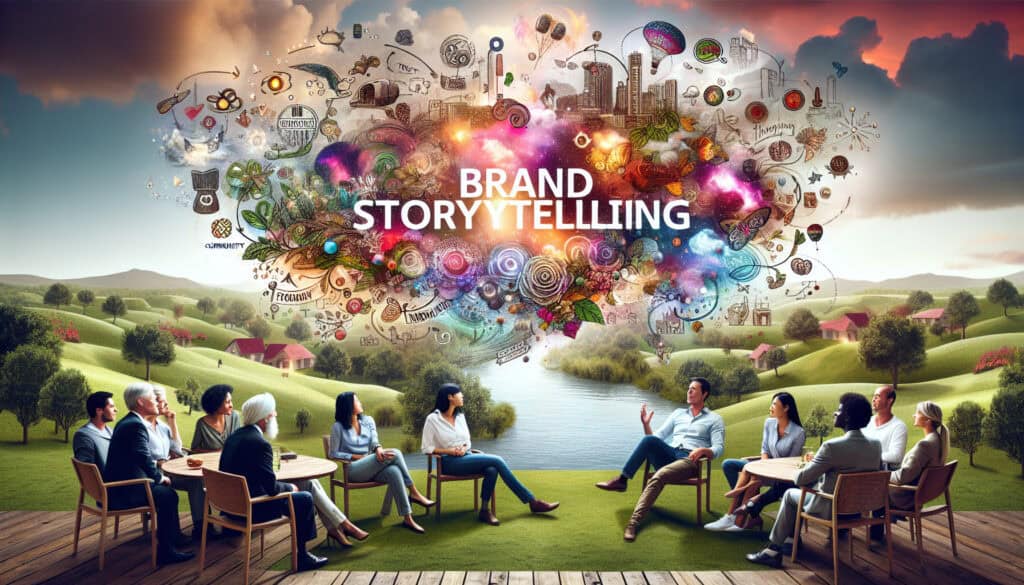The use of a narrative to connect your brand to customers, with a focus on linking what you stand for to the values you share with your customers.
- Methodologies: Lean Sigma, Manufacturing
Brand Storytelling

Brand Storytelling
- Brand Positioning, Branding Strategies, Customer Experience, Marketing, Marketing Strategy, Product Branding, Product Differentiation, User-Centered Design, Value Proposition
Objective:
How it’s used:
- Instead of just stating facts about products, companies create a compelling narrative around the brand's history, mission, or impact, using it in marketing campaigns, social media, and content.
Pros
- Builds an emotional connection with consumers, makes the brand more memorable and relatable, and helps to communicate complex values and ideas in an engaging way.
Cons
- Requires authenticity to be effective, a poor story can backfire and damage the brand, and it can be difficult to craft a narrative that resonates with a broad audience.
Categories:
- Customers & Marketing, Product Design
Best for:
- Building a deeper, emotional connection with customers by communicating the brand's purpose and values through a compelling narrative.
Brand storytelling effectively finds applications across a multitude of industries, such as consumer goods, technology, and fashion, where emotional engagement is essential for achieving brand loyalty. Companies like Nike and Apple illustrate how a rich narrative can position a brand in the minds of consumers; for instance, Nike’s “Just Do It” campaign conveys not only the brand’s key message of motivation but also its commitment to empowering athletes and individuals. This methodology is especially invaluable during the branding and marketing phases of product development, where teams can collaborate to articulate their vision through stories that resonate with target audiences across various channels, including social media platforms, blogs, advertisements, and even packaging. The process typically involves cross-functional teams, including product designers, marketers, and communicators, who collectively explore the brand’s origins, mission statements, and the societal impacts of their products or services. Successful implementation can enable clearer communication of a brand’s purpose while demystifying technical concepts for customers, making complex values more palpable and relatable. Furthermore, leveraging storytelling in product design not only creates memorable experiences but can also enhance customer loyalty, as individuals often feel a stronger allegiance to brands that share and embody similar values to their own. Through this approach, brands can effectively cultivate an identity that extends beyond mere transactional relationships, embedding their narratives within the cultural fabric of their consumers’ lives.
Key steps of this methodology
- Identify the core values and mission of the brand.
- Craft a narrative that intertwines the brand's history with its mission.
- Develop relatable characters or personas that embody the brand's values.
- Create a compelling plot that includes challenges and triumphs associated with the brand.
- Utilize various media formats to share the narrative across marketing channels.
- Engage customers through interactive storytelling techniques.
- Foster community involvement by encouraging customers to share their own stories related to the brand.
- Continuously iterate and evolve the narrative based on customer feedback and market changes.
Pro Tips
- Incorporate user-generated content into your narrative to enhance authenticity and demonstrate real-world applications of your brand's mission.
- Utilize data storytelling techniques to illustrate the impact of your innovations, weaving statistics into the narrative for deeper credibility.
- Engage in immersive experiences, such as live storytelling events or interactive campaigns, that allow customers to experience your brand's values firsthand.
To read and compare several methodologies, we recommend the
> Extensive Methodologies Repository <
together with the 400+ other methodologies.
Your comments on this methodology or additional info are welcome on the comment section below ↓ , so as any engineering-related ideas or links.
Historical Context
1960
1980
1983
1990
1995
2000
2010
1950
1980
1980
1986
1994
1995
2000
(if date is unknown or not relevant, e.g. "fluid mechanics", a rounded estimation of its notable emergence is provided)














Related Posts
Master Production Schedule (MPS)
Mass Customization
Marketing Funnel
Marketing Audit
MAPO Index (Movement and Assistance of Hospital Patients)
Manufacturing Resource Planning (MRP II)